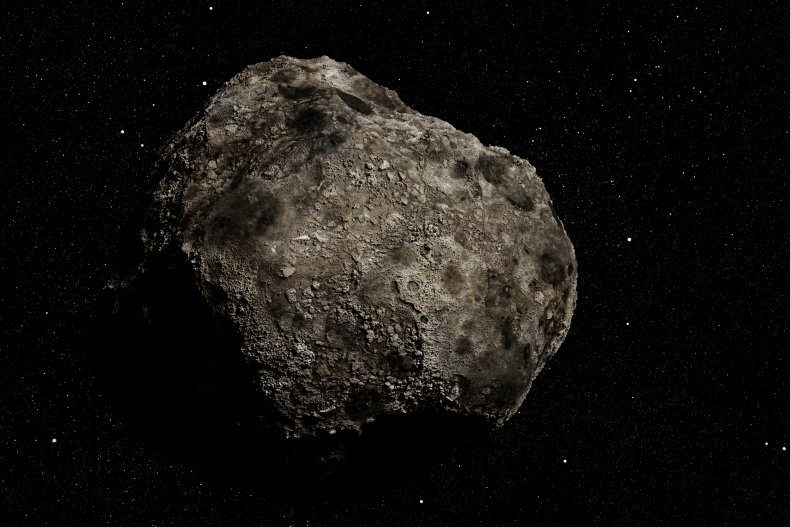Asteroid 10 Times Bigger Than the Statue of Liberty Approaching Earth
A large asteroid that could measure around 10 times taller than the Statue of Liberty is set to make a close—albeit safe—approach to our planet on May 27.
The asteroid, known as 7335 (1989 JA), is scheduled to come as close as 2.5 million miles to the Earth at 10:26 a.m. ET on May 27, data from NASA‘s Center for Near Earth Studies (CNEOS) shows.
At this point, the space rock will be zooming past our planet at a staggering speed of around 47,200 miles per hour. While this approach is deemed close by astronomical standards, it is not close by practical measures and there is no threat to the Earth from this asteroid, which was discovered in May 1989 by astronomer Eleanor “Glo” Helin at the Palomar Observatory in California.
“This object’s orbit and future positions are very well known so that the predicted Earth close approach distance on May 27 is also the minimum possible close approach on this date,” Don Yeomans, a former NASA planetary scientist, told Newsweek.

iStock
The space rock is one of more than 29,000 near-Earth objects, or NEOs, that scientists have discovered to date—the majority of which are asteroids. The term is used to refer to any astronomical body that passes within around 30 million miles of our planet’s orbit.
More than 2,200 of these NEOs—including 7335 (1989 JA)—are currently classified as “Potentially Hazardous” given their estimated size and orbits.
The Potentially Hazardous classification simply means that over many centuries and millennia, the orbits of such objects may evolve into ones that have a chance of colliding with the Earth, according to CNEOS director Paul Chodas.
But Chodas told Newsweek that none of the known Potentially Hazardous NEOs have any chance of colliding with the Earth over the next century or so, although longer-term risks are not assessed.
“Thus, while [7335 (1989 JA)] can get both close enough to Earth and it is bright (i.e., large) enough to qualify as a potentially hazardous asteroid, it is not even a remote threat on May 27,” Yeomans said.
Yeomans said 7335 (1989 JA) is “relatively large” as near-Earth asteroids go, with CNEOS figures indicating that it has a diameter of around 1.8 kilometers (5,900 feet) across. However, measuring the size of asteroids in space is a tricky business and there are other, smaller estimates for the size of the asteroid.
“Measuring the sizes of distant objects in space is difficult,” Greg Brown, an astronomer at Royal Observatory Greenwich in the United Kingdom, told Newsweek. “Because often we are not able to physically see how big it is—they often appear as unresolved dots in telescopes—astronomers are often left to work out how big it is via how bright it appears.”
“The bigger it is, the more light it will reflect and thus the brighter it will seem,” he said. “However, this requires an assumption of how reflective the material it is made from is, which can vary greatly. Add on a number of other complications and the actual size of an object can be very different from the calculated value.”
The figure for the size of 7335 (1989 JA) in the CNEOS database appears to originate from a measurement reported in a study from 1994. Whereas more recent measurements report that the diameter of the asteroid is roughly around the 1 kilometer (3,280 feet) mark.
Alan Harris, a NASA expert on near-Earth asteroids told Newsweek that while 1.8 kilometers is within the potential range of possibility for the diameter of this asteroid, the space rock is likely somewhat smaller—closer to around 1 kilometer across.
Read More: Asteroid 10 Times Bigger Than the Statue of Liberty Approaching Earth

